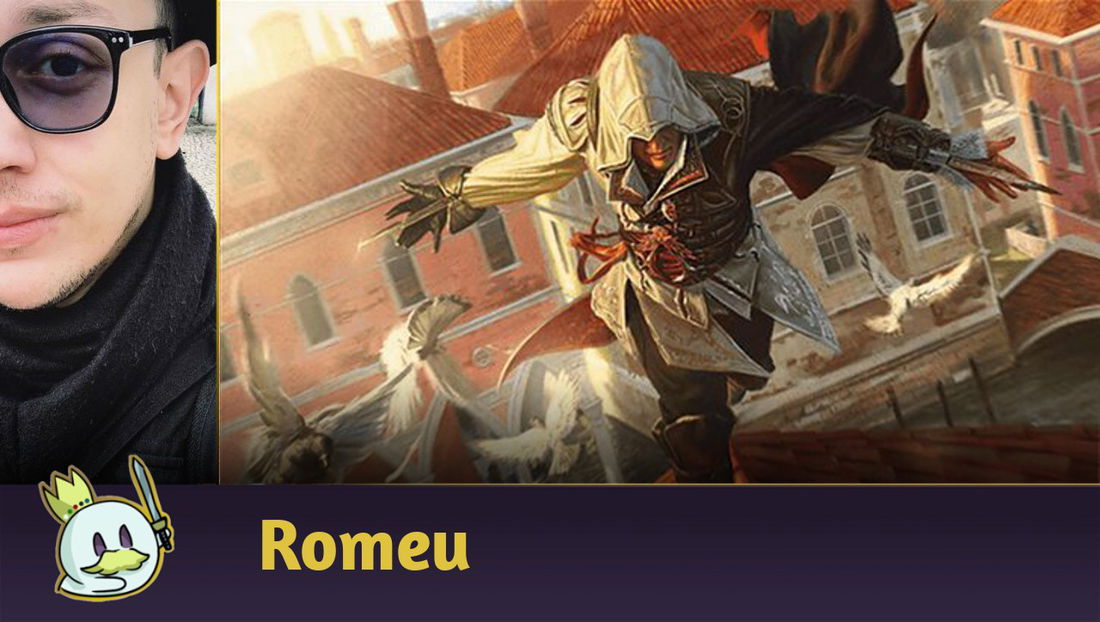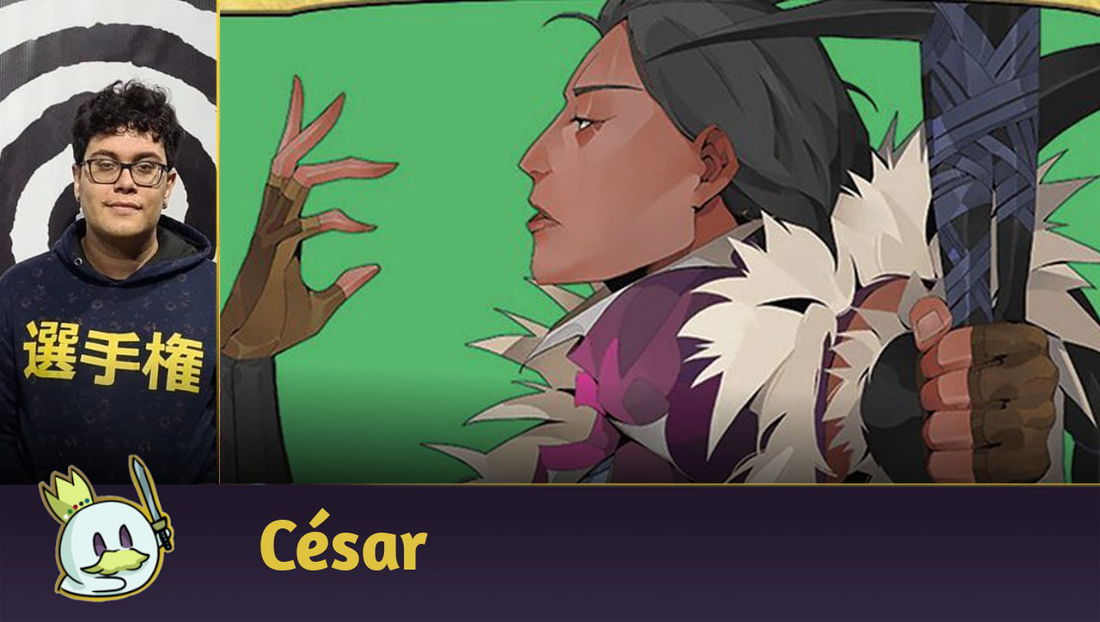Creatures are a key feature of Magic: The Gathering. It is through them that most games develop and are concluded, being present in most decks and being commonly evaluated in the inclusion of several lists.
But times have changed: today, it's not enough for the creature to just have an efficient cost and a strong body as was the case with Tarmogoyf for years: they need to generate something, have an impact, disfavor trades with removals or be naturally so powerful with their abilities that the impact of interaction and/or blockers is mitigated - and as Magic became a more board-centered game, the more efficient the creatures became.
In today's article, we cover the ten best Magic creatures in 2024, based on their impact on the competitive scene, individual power level, and the way they have affected and still affect the game.
The 10 Best Creatures in MTG
10 - Emrakul, the Aeons’ Torn

Emrakul, the Aeons' Torn can be considered the most powerful creature in Magic in terms of effects, abilities and impact on the battlefield, practically winning the game the moment it is cast - but its high mana cost makes it extremely restrictive to be played by conventional means.
Still, Emrakul stars in some of the most important decks in the game's history - all very focused on cheating on its mana costs, putting it directly in play with effects like Show and Tell and Through the Breach - granting it the tenth position for being the most threatening of all the creatures in the game.
9 - Thassa’s Oracle

If Emrakul practically wins the game the moment she is cast, what can we say about a creature that literally has a game-winning ability?
Thassa's Oracle is the best alternative wincondition ever released in Magic and has motivated the creation of several decks around using it or returning it from the graveyard for an instant victory and, on its own, has leveraged strategies like Doomsday in Legacy and led to the banning of Inverter of Truth and Underworld Breach on Pioneer.
8 - Atraxa, Grand Unifier

Atraxa, Grand Unifier is the result of four of the five Phyrexian praetors experimenting with a Mirran angel, and its latest version is the most powerful reanimation target in recent times, dethroning Griselbrand from where he sat for ten years.
What makes Atraxa so strong is the gigantic amount of value she adds when coming into play, combined with a body that is difficult to deal with, impossible to beat in the race and with a combination of keywords that puts its controller far ahead on combat.
7 - Orcish Bowmasters

Orcish Bowmasters doesn't look impressive in a vacuum: a 1/1 that puts in a token and deals one damage isn't relevant, even for two mana. However, this creature stands out for the way it punishes one of the most important elements of a Magic game: drawing cards.
Its presence alone has invalidated several creatures in Modern and Legacy and punishes many decks for doing something the game rewards. Cards like Brainstorm, Mishra's Bauble and others now need to be played carefully to prevent the opponent from generating too much value with an Orcish Bowmasters - permanently changing the way Magic is played in the main eternal formats.
6 - Modern Horizons 2 Elementals

The famous Elementals released in Modern Horizons 2 permanently changed the way competitive Magic and eternal formats are played, as they culminate everything a creature needs today: cost efficiency, versatility, and high individual power.
All of them have become staples in Modern, Legacy and Timeless, with a high presence, especially in the Maindeck, with Grief being the most controversial of the cycle due to its impact if it is cast and reanimatged on the first turn, removing two cards from the opponent's hand before they even have a chance to play - Fury also had a predominant impact and needed to be banned from Modern, while Solitude, Endurance and Subtlety are staples in several decks.
5 - Uro, Titan of Nature’s Wrath

Uro, Titan of Nature’s Wrath is the complete package: it is a threat, ramp, life gain and card advantage in one card, never being useless during the game.
In the early game, Theros Beyond Death's titan is about as good as a Time Walk against aggressive decks while generating enough value in attrition games to play other impactful cards earlier. Later, Uro returns to the battlefield to dominate the game every turn he remains there, and if that wasn't enough, conventional removals don't work against him since his Escape cost can be paid again.
4 - Deathrite Shaman

Known as the “one-mana Planeswalker”, Deathrite Shaman is the most utilitarian creature to ever exist in Magic. In addition to providing access to ramp, it also worked as life gain, clock and graveyard hate - all in a single card that, due to its versatility, was useful at any stage.
However, Deathrite Shaman is not a card that operates alone: using Fetch Lands is mandatory to extract value from it, as, without them, its ability to ramp is greatly mitigated, leaving it in a bad spot, as exemplified by the little impact the card has on Pioneer.
3 - White Plume Adventurer

The Initiative mechanic is absolutely broken in 1v1, as evidenced by the various enablers banned in Pauper and also by the ban on White Plume Adventurer in Legacy - the easiest to cast among all creatures with this ability.
In addition to starting to offer value the moment it comes into play, White Plume Adventurer helps protect its controller's Initiative and the mechanic continues to work even in its absence, meaning that - if well applied - its controller will continue extracting the most out of it.
It had a short period in competitive Magic because it was banned from Legacy just a few months after its release. However, this creature continues to see play in Vintage, and the only reason it didn't cause more damage and impact on the game was because Commander Legends was illegal in other formats.
2 - Ragavan, Nimble Pilferer

Ragavan, Nimble Pilferer is a mix of a little bit of everything that the cards below it are: its cost is very low, it has versatility in being able to be cast with Dash, it generates value every turn in which it deals damage to the opponent, accelerates mana and can dominate the game as early as the first turn.
For many, Ragavan was a design mistake, as no creature should be that efficient in cost and impact. A first turn with the monkey in play demands an immediate response because even if the card exiled from the opponent's deck doesn't make a difference, the Treasure token created by the monkey can create even more impactful plays too soon, putting Ragavan in a spot where he is far ahead from many other creatures.
1 - Lurrus of the Dream-Den

Companion can be considered one of the most broken - or the most broken - mechanic in Magic. If it hadn't suffered errata where it is necessary to pay 
Lurrus of the Dream-Den was at the heart of the problem with Companions: by forcing the use of low-cost permanents, it absurdly optimized deckbuilding in all formats of the game where it was legal, leveraging aggressive strategies that could, now having a powerful recursion engine, starred Control lists where it was the main win condition and gave Tempo archetypes a way to maintain a constant flow of threats, placing it at the epicenter of the game.
It remains an influential card to this day in the formats where it is still legal, with Lurrus Saga being the most influential powerful in Vintage, while several Timeless archetypes run it without any relevant deckbuilding concessions and/or use it to further optimize their lists.
Lurrus, with the other Companions, changed the way many archetypes build their lists and would remain the most influential creature in the game if it were still legal in most formats, thus making it the best creature in Magic: The Gathering.
Conclusion
That's all for today!
If you have any questions or suggestions, feel free to leave a comment!
Thanks for reading!













— Commenti 0
, Reazioni 1
Diventa il primo a commentare